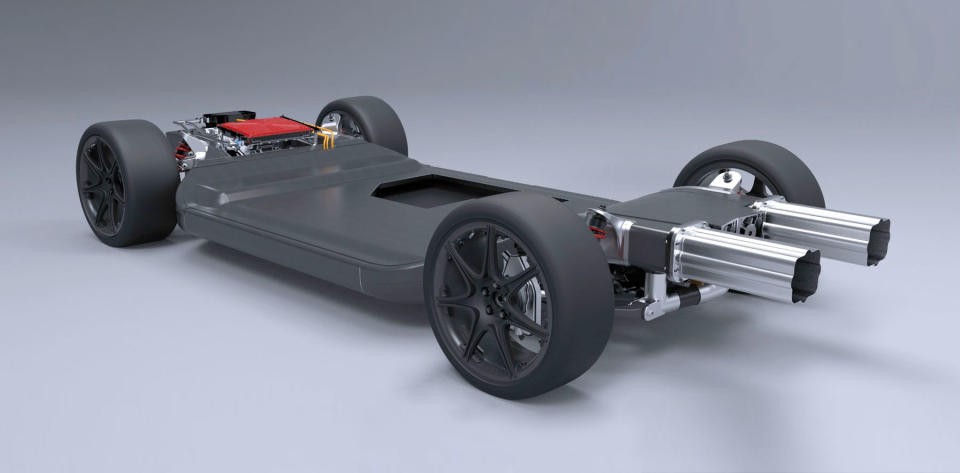Williams redesigns the chassis for lighter and stronger EVs
The new chassis creates less waste, is stronger and 40 percent lighter than existing vehicle platforms.
There is frequently a trickle-down from the world of high-end motor racing through to the cars on sale at your local dealership (and refrigerators). Which is why the latest project to emerge from Williams Advanced Engineering is so exciting for the future of EVs. The F1 company is showing off its lightweight electric car chassis that's designed to make electric rides lighter, safer and greener.
Right now, it's just a platform onto which other companies could, if they want to, adopt to build their own rides. But it's packing several innovative features, including fiber-reinforced suspension that is 40 percent lighter than a traditional aluminum wishbone. In addition, the company claims that the highly-automated manufacturing process generates "near zero waste."
Williams has also worked on a way to make a better exoskeleton for the EV's battery which should make it safer and more efficient. It makes sense, given that Williams currently designs the battery systems for Formula E and knows what's required to make them work. In addition, the company works with Jaguar and Aston Martin, boding well that their ideas will be adopted in mainstream cars.
And, fundamentally, electric vehicles are going to need radical departures from the gas-powered orthodoxy to really succeed. It's one of the reasons that Tesla has seen such success, relative to others, is that it was able to begin with a clean-er slate than those businesses transitioning from existing cars. It's still early days, but let's hope that Williams can use this new chassis to pave the way for lots of exciting electric vehicles.


